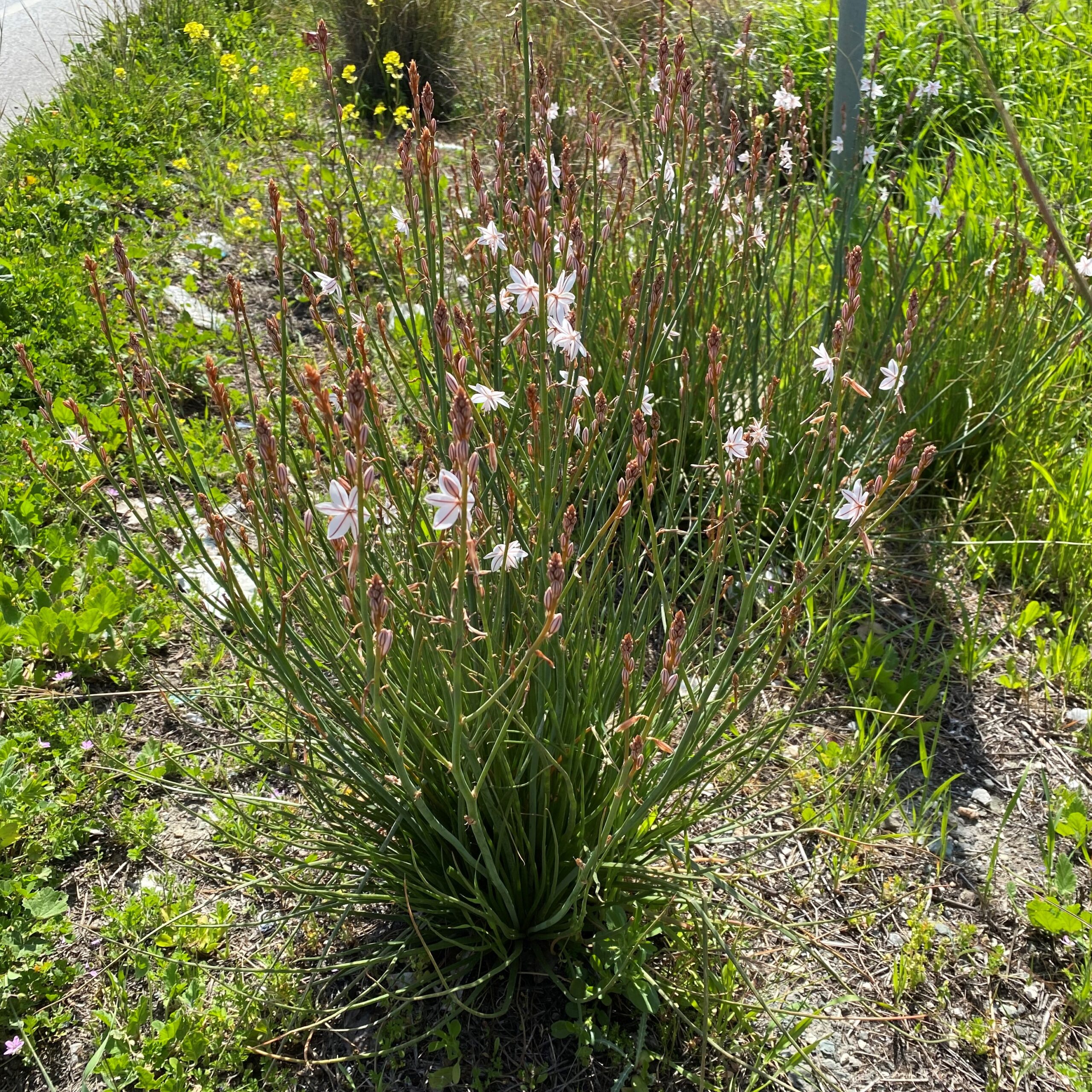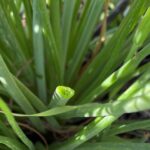Ασφόδελος ο σωληνοειδής
Etymology of Asphodelus fistulosus: "Asphodelus" derives from Ancient Greek "ἀσφόδελος" which is of unknown etymology. "Fistulosus" is Latin meaning "tuberous", referring to its leaves.
There are three Asphodelus species in the wild Cypriot habitat.
Asphodelus fistulosus is supposed to exist all around Cyprus. It is the second most popular species of the Asphodelus genus in Cyprus and one can see plenty of it on the roadside of Mesogis Avenue, north of the city of Pafos towards Stroumbi. Additionally, there are Asphodelus fistulosus on the main roadside of Giolou in Pafos, on the Kyvides roadside in Limassol, and on the roadside near the first round-about in Kato Polemidia.
Asphodelus fistulosus's flowering time in Cyprus is normally February until June. It appears at an altitude of up to 675 metres. It is obviously a locally common plant that adores roadsides.
How to identify Asphodelus fistulosus:
- It is a slender plant, generally less than 70 cm high.
- Its leaves are grass-like, fistulose. More specifically, if you cut one leave you will notice a hole in the middle of it which resembles the leaves of an onion. This is the most clear indication that it is not an Asphodelus ramosus. This is possibly the reason why it is called from Latin "fistulosus" which means "pipe-shaped".
- Its roots are without tubers.
- Its perianth segments are 2-2.5 mm wide.
The following information distinguish Asphodelus fistulosus from Asphodelus tenuifolius:
- Fistulosus is a perennial plant with a fleshy root, tenuifolius is an annual plant with fibrous roots.
- Its perianth-segments are 12-14 mm long, on tenuifolius they are only 4-7 mm long.
- The pedicels in fruit are 8-10 mm long, on tenuifolius they are 5-8 mm long.
- Finally, the capsule is 5 mm in diameter, on tenuifolius it is 3-4 mm.


